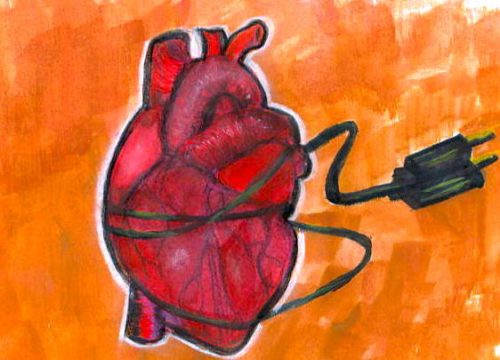Image courtesy of Noora Said.
More than one million Americans have a heart attack each year. Four to twelve percent of these patients develop cardiogenic shock a condition that prevents one’s heart from pumping the blood necessary to meet the body’s need.
Two common treatments for cardiogenic shock include the left ventricular assist device (LVAD) and the intra-aortic balloon pump (IABP). While LVADs are more commonly used, Yale University researchers recently reported the results of a study examining the discrepancies in in-hospital clinical outcomes between the two devices.
The study found that LVADs were associated with higher in-hospital mortality and in-hospital major bleeding. “Because there is relatively little evidence in this area, we think that the analysis that we did, and the conclusion that we made… would have both policy implications and regulatory implications,” explained Nihar Desai, an assistant professor at the Yale School of Medicine who worked on this study.
Given the two-and-a-half-fold increase in the utilization of LVADs between 2015 and 2017, Desai’s research suggests that hospitals might need to rethink treatment plans for cardiogenic shock. “We hope everyone is trying to integrate these data into their practice, as it is on everyone to be a little more judicious of [LVADs], given little evidence that would support their use,” Desai said. Hopefully, this research will influence the way many doctors treat cardiogenic shock patients. After all, for every patient that enters the emergency room, the most common treatment option available should be the best one for them.
Sources:
[1] Dhruva SS, Ross JS, Mortazavi BJ, et al. Association of Use of an Intravascular Microaxial Left Ventricular Assist Device vs Intra-aortic Balloon Pump With In-Hospital Mortality and Major Bleeding Among Patients With Acute Myocardial Infarction Complicated by Cardiogenic Shock. JAMA. 2020;323(8):734–745. doi:10.1001/jama.2020.0254
[2] Redfors B, Angerås O, Råmunddal T, et al. 17-Year trends in incidence and prognosis of cardiogenic shock in patients with acute myocardial infarction in western Sweden. Int J Cardiol. 2015;185:256-262. doi:10.1016/j.ijcard.2015.03.106
[3]https://www.mayoclinic.org/diseases-conditions/cardiogenic-shock/symptoms-causes/syc-20366739
[4]https://www.dicardiology.com/article/datascope-recalls-intra-aortic-balloon-pumps-due-potential-battery-failure

